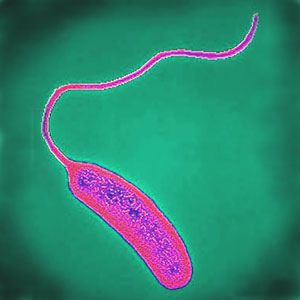-
 Taproot
Taproot
-
 Nephroblastoma
Nephroblastoma
-
 Incretin modulators
Incretin modulators
-
 CRC
CRC
-
 Hind-claw
Hind-claw
-
 Blood
Blood
-
 Intron
Intron
-
 Juvenile water
Juvenile water
-
 Constellation of Auriga
Constellation of Auriga
-
 Rabies
Rabies
-
 Half-life
Half-life
-
 Faraday constant
Faraday constant
-
 Ultraviolet
Ultraviolet
-
 Passive smoking
Passive smoking
-
 Expectorate
Expectorate
-
 Gene gun
Gene gun
-
 Xylitol
Xylitol
-
 Ediacaran
Ediacaran
-
 Phylogeny
Phylogeny
-
 Brönsted acid
Brönsted acid
-
 Mesohaline water
Mesohaline water
-
 Leaving group
Leaving group
-
 Eucrite
Eucrite
-
 MEO orbit
MEO orbit
-
 Creep
Creep
-
 WiMAX
WiMAX
-
 Aglycone
Aglycone
-
 Mountain pine
Mountain pine
-
 Calcitonin
Calcitonin
-
 P80
P80
Vibrio cholerae
The bacterium Vibrio cholerae is the agent which causes cholera.
Features of Vibrio cholerae
Vibrio cholerae (or the cholera vibrio or the comma bacillus) is a Gram negative curved-rod shaped proteobacterium discovered by Filippo Pacini in 1854 and later rediscovered by Robert Koch. It also has a flagellum which gives it motility.
It usually lives in aquatic ecosystems, although human beings also constitute a reservoir.
The O1 strain has two circular chromosomes with four million base pairs which code for 3,885 genes.
Vibrio cholerae and cholera
Epidemics are causes by two sera types, O1 and O139. The other known strains are not pathogenic to humans.
The bacterium is not strictly speaking pathogenic but usually contains a CTX prophage (a virus incorporated into the bacterial genome) which codes for cholera enterotoxin, and is responsible for the symptoms of the disease.

The cholera agent is the bacterium Vibrio cholerae, a flagellated bacillus. © AJC1, Flickr, CC by-nc 2.0
Latest
Fill out my online form.



